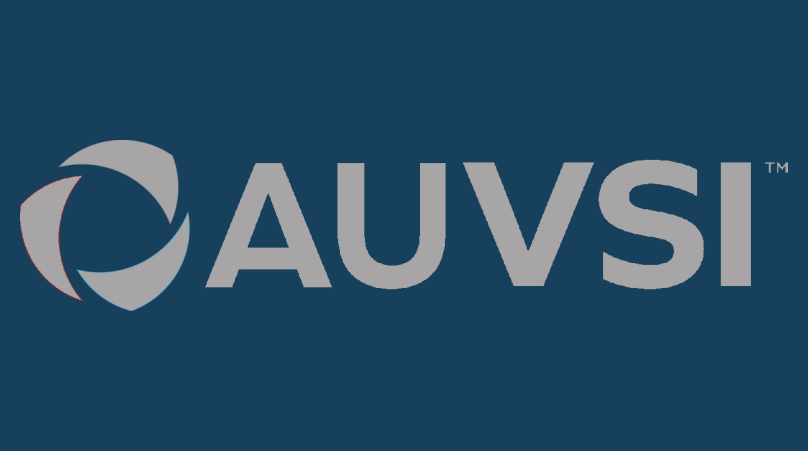Need for global harmonization dominates conversation during Episode I of FAA UAS Symposium – Remotely Piloted Edition
July 14, 2020 | AUVSI News
For the UAS industry to continue growing and evolving, some sense of global harmonization surrounding standards and best practices will need to be achieved, according to speakers during Episode I of the 5th annual FAA UAS Symposium – Remotely Piloted Edition.
“To me, the real key to harmonization is the standards. It’s getting performance-based standards that we can all agree to,” says Jay Merkle, executive director, Office of UAS Integration, FAA.
Chris Rocheleau, executive director, Office of International Affairs, FAA, explains harmony as “making sure everyone has those best practices to advance this [technology] carefully, slowly, and safely.
“We’ve been saying this for how many years now? Over and over, safety is key,” Rocheleau says. “If you have a setback, it’s going to set back how we evolve this thing.”
Aviation is inherently an international business and drones have been global from the very beginning, Merkle notes. With that in mind, these systems need to be capable of crossing borders and operating in accordance with laws in different countries, not just the country that they were developed in.
“It’s important for the innovation of this industry that you don’t compartmentalize aircraft to one small region that they can only operate in that region, because these manufacturers are learning a tremendous amount by operating globally. They’re learning how to be safe,” Merkle says.
Phil Kenul, chair of the F38 UAS Committee, ASTM, points out that if companies are building their respective systems to different standards and requirements across borders, it’s going to make it much more expensive to get this technology off of the ground, which will be detrimental to the community as a whole.
A lack of harmonization could also affect safety, as too much complexity could affect operators’ ability to repeatedly conduct operations.
“Drones travel, operators fly in many countries, so it is quite critical to have a harmonized set of requirements and standards that support those various services that are needed,” says Reinaldo Negron, head of UTM for Wing, and the co-president of the Global UTM Association (GUTMA).
U.S./Swiss announce partnership
Achieving global harmonization will require collaboration between countries and their respective governing bodies. Setting the tone for the type of collaborative effort it will require to achieve global harmonization, the FAA and the Switzerland Federal Office of Civil Aviation (FOCA) together announced an agreement on the first day of the Symposium to harmonize domestic and international safety standards for UAS.
The agreement builds on U.S and Swiss efforts to ensure that this fast growing, broad segment of aviation is integrated safely, efficiently and seamlessly around the world.
“UAS activities are now accepted worldwide as a vital sector of aviation,” Merkle says. “This U.S./Swiss agreement continues the move forward of the safe, efficient, and internationally harmonized integration of these vehicles into the world’s airspace.”
Under a Declaration of Intent (DOI), the participants plan to collaborate on UAS issues of mutual interest and benefit. The primary objectives of the DOI are to “provide opportunities to engage in research and development; exchange ideas, personnel, and information; provide coordination with other government entities and stakeholders; and to collaborate on other initiatives and projects determined to be of mutual interest and benefit in relation to UAS operations.”
The Innovation and Digitalization Unit of Switzerland’s FOCA is the primary authority and point of contact designated by the Swiss Confederation under this agreement to develop regulations covering UAS activities, which includes certification and surveillance of drone designers, manufacturers and operators. The leader of Switzerland’s efforts on UAS, FOCA is the designated authority in charge of facilitating the integration of drones into Swiss airspace. FOCA also promotes technological and operational research in the field and the development of all aspects related to these aircraft.
The FAA’s UAS Integration Office is the agency’s technical point of contact under this agreement. The office coordinates the development of drone-centric operating concepts, policies, requirements, criteria, and procedures for new system evaluations. The office is also responsible for leading the FAA’s innovation agenda to support UAS integration and the implementation of emerging technologies, drone-related research and development priorities, and the development of international and domestic operating standards.
The importance of UTM
An Unmanned Traffic Management (UTM) ecosystem will play an integral role in achieving global harmonization, speakers remarked during the Symposium. Because there is still some confusion about what UTM is and isn’t, several speakers sought to clarify what it is during the Symposium.
“It’s not a box, it’s not a research project…it’s how the FAA will support operations for UAS operating in low altitude airspace, airspace in which we do not provide air traffic services,” explains Steve Bradford, chief scientist for Architecture and Next Generation Air Transportation System (NextGen) Development, FAA.
Bradford went on to say that UTM uses industry’s ability to supply services under the FAA’s regulatory authority where these services currently do not exist. It’s a community–based cooperative traffic management ecosystem, where operators and entities providing organizational support—commonly known as UAS Service Suppliers (USS)—provide services and coordinate execution.
The Air Traffic Organization (ATO) is the operational arm of the FAA, responsible for managing the National Airspace System (NAS) and providing safe and efficient air navigation services to 29.4 million square miles of airspace, which represents more than 17 percent of the world’s airspace. The ATO welcomes the opportunity for industry to manage a portion of the airspace at a low altitude, especially since it doesn’t have the workforce or the systems to see or communicate with small UAS at low altitudes.
“From an ATO perspective, we view UTM as a great opportunity for industry to manage a subset of the operations at low altitude,” says Michele Merkle, director of Air Traffic Organization Operations Planning and Integration, FAA.
For Merkle, UTM is a construct that allows the FAA to maintain authority over the airspace with industry managing some of the operations that take place within the airspace. While UTM is for small UAS operating below 400 feet in mostly uncontrolled airspace, Bradford notes that some people think it has potential capabilities in other parts of the airspace.
Bradford also points to a recent request for information (RFI) asking the manned community how UTM could support their operations. He says that manned operators could get a lot of information from the UTM network about who and how they’re operating, which would make the airspace safer for everyone.
“Information and continuous sharing of information is a cornerstone of UTM,” Bradford says.
One of the first steps towards UTM was the establishment of the Low Altitude Authorization and Notification Capability (LAANC), according to Michele Merkle. Merkle says that LAANC has tested the construct of USS and the public/private partnership that the FAA has with industry.
Through automation, LAANC expedites approvals for low altitude UAS authorizations. Data sharing between government and industry has allowed the approval process for requests to be drastically reduced from weeks to seconds. LAANC is currently being used at over 400 facilities built on over 600 UAS facility maps, and there are 21 USS supporting LAANC operations right now.
Remote ID and Expanded Operations
Something else that will play a major part in UTM is Remote ID, which is the ability of a drone to provide identification information that can be received by other parties. In fact, one speaker described Remote ID as the first UTM standard.
Merkle says that Remote ID will not only identify drone operators, but it will also pave the way for various types of operations, including beyond visual line of sight (BVLOS) operations, nighttime operations and ultimately, UTM.
“Right now, without Remote ID you can’t tell who’s flying in accordance with the rules and who’s not,” Bradford says. “I think Remote ID will be a great leveler of expectations and provide a lot of opportunities for us to be more secure and more reasoned with operations.”
Episode II of the FAA UAS Symposium – Remotely Piloted Edition will take place August 18 to 19. More information is available at auvsi.org/FAAsymposium.
- Industry News


